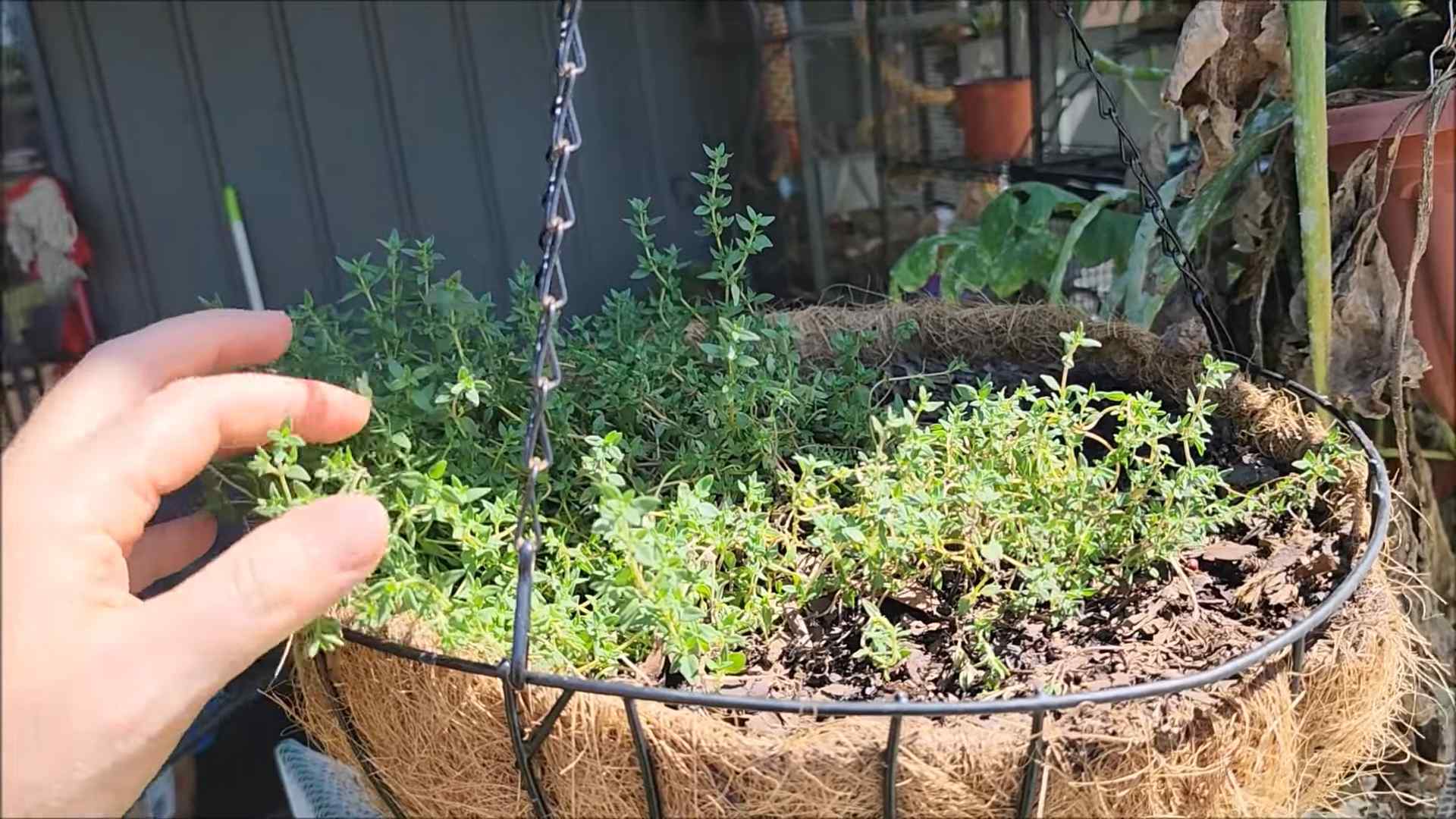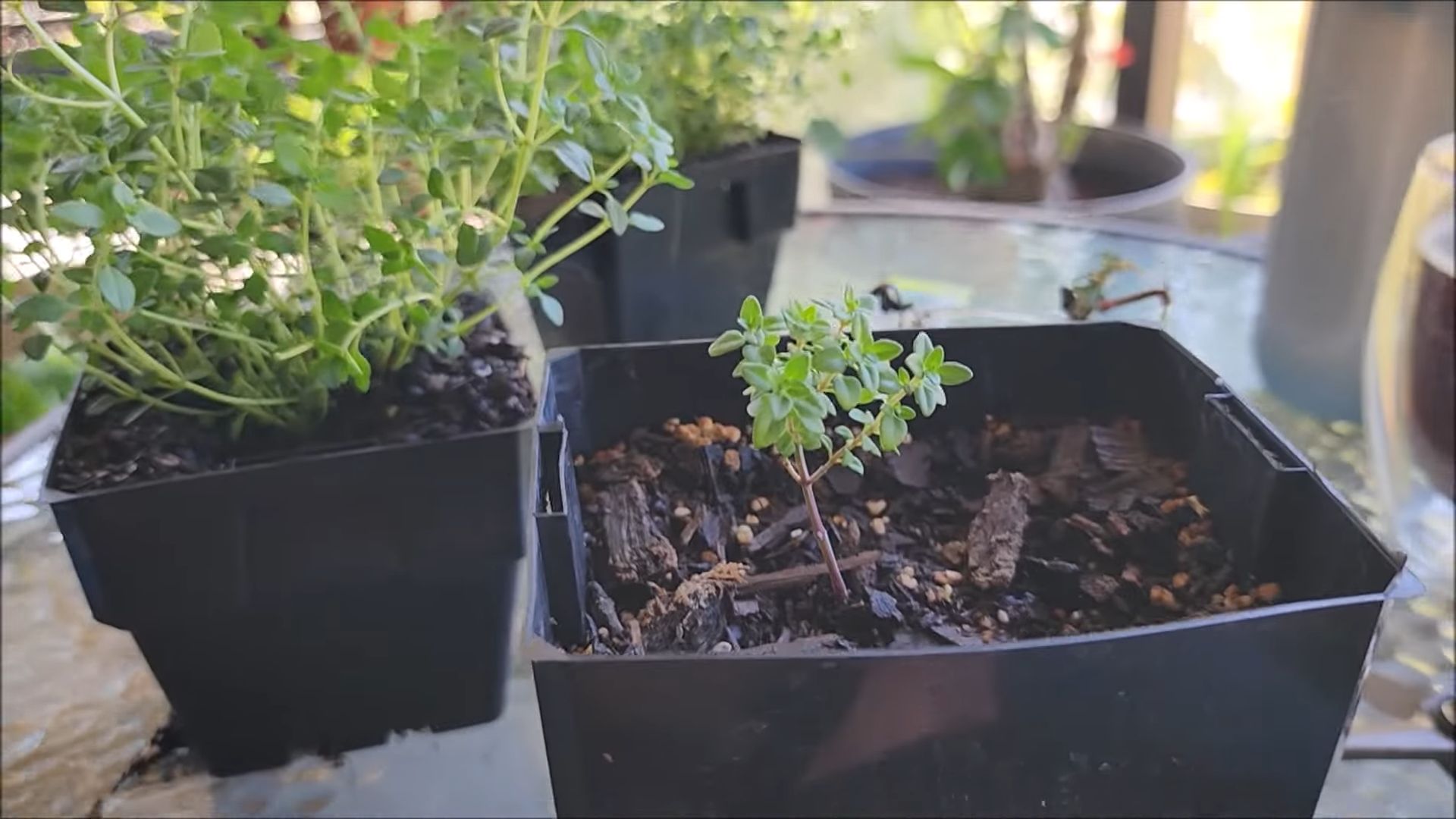Grow Thyme at Home – and unlock a world of culinary possibilities right outside your door! Have you ever dreamt of snipping fresh, fragrant herbs just moments before adding them to your favorite dish? Imagine the burst of flavor, the vibrant aroma, and the sheer satisfaction of using ingredients you nurtured yourself. This isn’t just a dream; it’s an achievable reality with a little know-how, and I’m here to guide you.
Thyme, with its rich history dating back to ancient Egypt where it was used for embalming, and its significance in ancient Greece as a symbol of courage, is more than just a flavorful herb. It’s a connection to centuries of tradition. But beyond its historical charm, growing thyme at home offers practical benefits for the modern gardener.
In today’s fast-paced world, convenience is king. But what if convenience could also be healthy, sustainable, and incredibly rewarding? That’s where this DIY guide comes in. Many people struggle with access to fresh, high-quality herbs, or they find store-bought options to be expensive and lacking in flavor. By learning how to grow thyme at home, you’ll not only save money and reduce your carbon footprint, but you’ll also gain a deeper appreciation for the natural world. Plus, I’ll share some simple tricks and hacks that will make the process easy and enjoyable, even if you don’t have a green thumb! So, let’s get started and transform your space into a thriving herb garden.

Growing Thyme at Home: A Beginner’s Guide
Hey there, fellow plant enthusiasts! I’m so excited to share my experience with growing thyme at home. It’s surprisingly easy, and having fresh thyme on hand for cooking is a total game-changer. Plus, the aroma is just divine! This guide will walk you through everything you need to know, from choosing the right variety to harvesting your fragrant bounty.
Choosing Your Thyme Variety
Before we dive into the nitty-gritty, let’s talk about thyme varieties. There are quite a few, each with its own unique flavor and characteristics. Here are a few popular options:
* Common Thyme (Thymus vulgaris): This is your classic culinary thyme. It has a strong, earthy flavor that’s perfect for soups, stews, and roasted meats. It’s also relatively hardy.
* Lemon Thyme (Thymus citriodorus): As the name suggests, this variety has a delightful lemon scent and flavor. It’s fantastic in teas, salads, and with fish or chicken.
* Creeping Thyme (Thymus serpyllum): This low-growing thyme is more often used as a ground cover, but it’s also edible. It has a milder flavor than common thyme and is great for adding to pizzas or using as a garnish.
* Woolly Thyme (Thymus pseudolanuginosus): This variety is primarily ornamental, with soft, fuzzy leaves. While technically edible, it’s not known for its culinary qualities.
I personally love growing both common thyme and lemon thyme. They complement each other beautifully in the kitchen!
Getting Started: What You’ll Need
Okay, let’s gather our supplies. Here’s what you’ll need to get your thyme-growing journey underway:
* Thyme Seeds or Seedlings: You can start from seed, but buying seedlings from a local nursery is a faster and easier option, especially for beginners.
* Well-Draining Potting Mix: Thyme hates soggy soil, so make sure you use a potting mix that drains well. A mix specifically formulated for herbs is ideal.
* Pots or Containers: Choose pots that are at least 6 inches in diameter. Make sure they have drainage holes!
* Sunny Location: Thyme needs at least 6 hours of sunlight per day. A south-facing windowsill or a sunny balcony is perfect.
* Watering Can or Spray Bottle: For gentle watering.
* Optional:
* Grow lights (if you don’t have enough natural light)
* Fertilizer (a balanced liquid fertilizer)
* Gardening gloves
Planting Your Thyme
Now for the fun part – planting! Whether you’re starting from seed or using seedlings, the process is pretty straightforward.
Planting from Seed
1. Prepare Your Pot: Fill your pot with well-draining potting mix, leaving about an inch of space at the top.
2. Sow the Seeds: Sprinkle the thyme seeds evenly over the surface of the soil. They’re tiny, so don’t worry about spacing them perfectly.
3. Cover Lightly: Gently press the seeds into the soil and cover them with a very thin layer of potting mix or vermiculite. Thyme seeds need light to germinate.
4. Water Gently: Use a spray bottle to mist the soil thoroughly. You want to keep the soil moist but not waterlogged.
5. Provide Warmth and Light: Place the pot in a warm, sunny location or under grow lights. The ideal temperature for germination is around 70-75°F (21-24°C).
6. Be Patient: Thyme seeds can take 14-21 days to germinate. Keep the soil consistently moist during this time.
7. Thin Seedlings (If Necessary): Once the seedlings have emerged and have a few sets of true leaves, thin them out so that they are spaced about 2-3 inches apart.
Planting Seedlings
1. Prepare Your Pot: Fill your pot with well-draining potting mix, leaving about an inch of space at the top.
2. Remove Seedlings from Their Containers: Gently squeeze the sides of the seedling container to loosen the soil. Carefully remove the seedlings, being careful not to damage the roots.
3. Plant the Seedlings: Dig small holes in the potting mix, spaced about 4-6 inches apart. Place the seedlings in the holes, making sure the top of the root ball is level with the soil surface.
4. Fill and Water: Fill in the holes with potting mix and gently press down around the base of the seedlings. Water thoroughly.
5. Provide Sunlight: Place the pot in a sunny location where it will receive at least 6 hours of sunlight per day.
Caring for Your Thyme
Once your thyme is planted, it’s time to provide it with the care it needs to thrive.
Watering
Thyme is drought-tolerant, so it’s important not to overwater it. Allow the soil to dry out slightly between waterings. When you do water, water deeply, until the water drains out of the bottom of the pot. Avoid getting the leaves wet, as this can lead to fungal diseases. I usually check the soil moisture by sticking my finger about an inch into the soil. If it feels dry, it’s time to water.
Sunlight
As I mentioned earlier, thyme needs at least 6 hours of sunlight per day. If you don’t have a sunny location, you can supplement with grow lights.
Fertilizing
Thyme doesn’t need a lot of fertilizer. In fact, too much fertilizer can make it leggy and less flavorful. If you want to fertilize, use a balanced liquid fertilizer diluted to half strength. Fertilize every 2-3 weeks during the growing season (spring and summer).
Pruning
Pruning is essential for keeping your thyme plant healthy and productive. Prune regularly to encourage bushier growth and prevent the plant from becoming woody. You can prune by snipping off the tips of the stems with scissors or pruning shears. I usually prune my thyme plants every few weeks during the growing season.
Overwintering
If you live in a cold climate, you’ll need to protect your thyme plants from frost. You can bring them indoors for the winter or cover them with a layer of mulch. If you bring them indoors, place them in a sunny location and water sparingly.
Harvesting Your Thyme
The best part of growing thyme is, of course, harvesting it! You can start harvesting thyme once the plant is about 4-6 inches tall.
1. Choose Your Stems: Select healthy, vibrant stems to harvest.
2. Cut the Stems: Use scissors or pruning shears to cut the stems, leaving at least 2 inches of growth on the plant.
3. Harvest Regularly: Harvesting regularly will encourage the plant to produce more leaves.
4. Best Time to Harvest: The best time to harvest thyme is in the morning, after the dew has dried.
Using Your Fresh Thyme
Now that you’ve harvested your thyme, it’s time to put it to use! Fresh thyme is incredibly versatile and can be used in a wide variety of dishes.
* Soups and Stews: Add thyme to soups and stews for a warm, earthy flavor.
* Roasted Meats and Vegetables: Sprinkle thyme over roasted meats and vegetables for a delicious aroma and flavor.
* Sauces: Use thyme to flavor sauces for pasta, chicken, or fish.
* Teas: Steep fresh thyme in hot water for a soothing and flavorful tea.
* Garnish: Use thyme as a garnish for salads, soups, and other dishes.
Drying Thyme
If you have more thyme than you can use fresh, you can dry it for later use.
1. Gather Your Thyme: Harvest the thyme as described above.
2. Bundle the Stems: Tie the stems together with twine.
3. Hang to Dry: Hang the bundles upside down in a cool, dry, and well-ventilated place.
4. Drying Time: It will take about 1-3 weeks for the thyme to dry completely.
5. Store the Dried Thyme: Once the thyme is dry, crumble the leaves and store them in an airtight container.
Alternatively, you can dry thyme in a dehydrator or in the oven on a very low setting.
Troubleshooting
Even with the best care, you might encounter some problems while growing thyme. Here are a few common issues and how to address them:
* Yellowing Leaves: This could be a sign of overwatering or nutrient deficiency. Make sure you’re not overwatering and consider fertilizing with a balanced liquid fertilizer.

Conclusion
So, there you have it! Growing thyme at home is not only achievable, but it’s also incredibly rewarding. Forget those sad, dried-out jars of thyme from the supermarket. Imagine stepping into your kitchen and snipping fresh, fragrant sprigs of thyme whenever you need them. The difference in flavor between store-bought dried thyme and freshly grown thyme is truly remarkable. It elevates your cooking to a whole new level, adding a depth and complexity that you simply can’t get any other way.
This DIY trick is a must-try for several reasons. First, it’s incredibly cost-effective. A single packet of thyme seeds or a small starter plant can provide you with a continuous supply of thyme for months, even years, depending on how well you care for it. Think of all the money you’ll save on buying those expensive little jars! Second, it’s incredibly convenient. No more last-minute trips to the grocery store when you realize you’re out of thyme. It’s right there, ready and waiting in your kitchen or garden. Third, and perhaps most importantly, it’s incredibly satisfying. There’s something deeply fulfilling about nurturing a plant from seed to harvest, knowing that you’re providing yourself with fresh, healthy ingredients.
But the benefits don’t stop there. Growing your own thyme allows you to control the quality of your herbs. You know exactly what’s going into your thyme – no pesticides, no herbicides, just pure, natural goodness. Plus, the act of gardening itself is incredibly therapeutic. It’s a great way to de-stress, connect with nature, and get some fresh air and sunshine.
Looking for variations? Consider growing different varieties of thyme! Lemon thyme adds a bright, citrusy note to your dishes, while creeping thyme is perfect for ground cover and releases a delightful fragrance when you walk on it. You can even experiment with growing thyme indoors in a small pot on your windowsill, making it accessible year-round, regardless of your climate.
Don’t be intimidated if you’ve never grown herbs before. Thyme is a relatively low-maintenance plant, making it perfect for beginners. With a little bit of sunlight, well-drained soil, and regular watering, you’ll be well on your way to enjoying a bountiful harvest of fresh thyme.
We wholeheartedly encourage you to try this DIY trick and experience the joy of growing thyme at home. It’s a simple, affordable, and incredibly rewarding way to enhance your cooking and connect with nature. Once you’ve tasted the difference between fresh and dried thyme, you’ll never go back!
So, grab some seeds or a starter plant, find a sunny spot, and get growing! We’re confident that you’ll be amazed at how easy and rewarding it is. And most importantly, we want to hear about your experience! Share your tips, tricks, and photos with us in the comments below. Let’s create a community of thyme-loving gardeners and inspire others to grow their own herbs at home. Happy growing!
Frequently Asked Questions (FAQ)
What kind of soil is best for growing thyme?
Thyme thrives in well-drained soil. It doesn’t need particularly rich soil, and in fact, too much fertilizer can actually reduce its flavor. A sandy or loamy soil mix is ideal. You can improve drainage by adding perlite or coarse sand to your potting mix. Avoid heavy clay soils, as they tend to retain too much moisture and can lead to root rot. When planting in the ground, ensure the area has good drainage and consider amending the soil with compost to improve its structure.
How much sunlight does thyme need?
Thyme needs at least six hours of sunlight per day to thrive. Choose a sunny location in your garden or a bright windowsill if growing indoors. If you’re growing thyme indoors and don’t have enough natural light, you can supplement with a grow light. Insufficient sunlight can result in leggy growth and reduced flavor.
How often should I water my thyme plant?
Thyme is drought-tolerant and doesn’t like to be overwatered. Allow the soil to dry out completely between waterings. When you do water, water deeply, ensuring the entire root ball is moistened. Overwatering can lead to root rot, which is a common problem with thyme. In general, water less frequently during the winter months when the plant is not actively growing.
How do I harvest thyme?
You can harvest thyme throughout the growing season. Simply snip off sprigs of thyme as needed, using sharp scissors or pruning shears. Avoid cutting back more than one-third of the plant at a time, as this can stress the plant. Regular harvesting encourages bushier growth. The best time to harvest thyme for drying is in the morning, after the dew has dried, but before the sun gets too hot.
Can I grow thyme indoors?
Yes, you can absolutely grow thyme indoors! Choose a pot with good drainage and use a well-draining potting mix. Place the pot in a sunny windowsill or under a grow light. Water sparingly, allowing the soil to dry out between waterings. Rotate the pot regularly to ensure even growth. Indoor-grown thyme may not be as vigorous as outdoor-grown thyme, but it will still provide you with a fresh supply of herbs.
How do I propagate thyme?
Thyme can be easily propagated from cuttings. Take a 4-6 inch cutting from a healthy stem, removing the lower leaves. Dip the cut end in rooting hormone (optional) and plant it in a pot filled with moist potting mix. Cover the pot with a plastic bag to create a humid environment and place it in a warm, bright location. Once the cutting has rooted (usually in a few weeks), you can transplant it into a larger pot or into the garden. Thyme can also be propagated by division, separating a mature plant into smaller clumps and replanting them.
What are some common problems with growing thyme?
The most common problems with growing thyme are root rot (caused by overwatering), powdery mildew (especially in humid conditions), and pests such as aphids and spider mites. To prevent root rot, ensure the soil is well-draining and avoid overwatering. To prevent powdery mildew, provide good air circulation around the plants. To control pests, you can use insecticidal soap or neem oil.
Can I dry thyme?
Yes, drying thyme is a great way to preserve it for later use. To dry thyme, tie sprigs together and hang them upside down in a cool, dry, well-ventilated place. You can also dry thyme in a dehydrator or in a low oven (170°F or 77°C). Once the thyme is completely dry, crumble the leaves and store them in an airtight container. Dried thyme will retain its flavor for several months.
What are some culinary uses for thyme?
Thyme is a versatile herb that can be used in a wide variety of dishes. It pairs well with meats, poultry, fish, vegetables, and eggs. It’s a key ingredient in many Mediterranean and French dishes. Thyme can be used fresh or dried. Add fresh thyme towards the end of cooking to preserve its flavor. Dried thyme can be added earlier in the cooking process. Try adding thyme to soups, stews, sauces, marinades, and roasted vegetables. It’s also a delicious addition to herb butters and flavored oils.
Is thyme a perennial?
Yes, most varieties of thyme are perennials, meaning they will come back year after year. In colder climates, thyme may die back in the winter, but it will typically regrow in the spring. To protect thyme plants in colder climates, you can mulch around the base of the plant with straw or leaves. Pruning thyme in the spring can help to encourage bushier growth and prevent it from becoming woody.




Leave a Comment